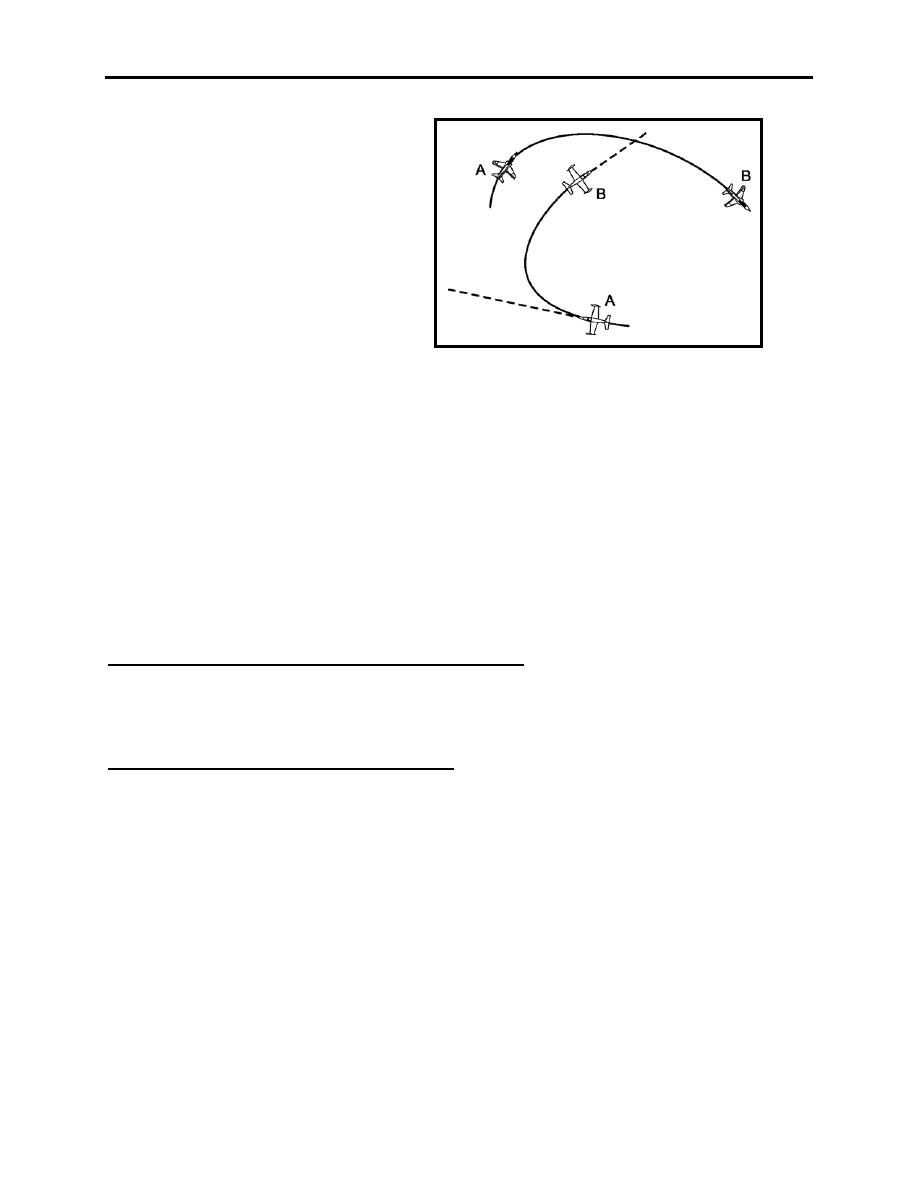 |
|||
|
|
|||
|
|
|||
| ||||||||||
|
|  CHAPTER NINE
BASIC FIGHTER MANEUVERING (BFM) THEORY
Increase/maintain range
Decrease/maintain AOT
Decrease/maintain Vc
Figure 9-13 Lag Pursuit
An aircraft attempting to achieve an offensive position on a maneuvering bogey will constantly
fly combinations of the three pursuit curves.
Pursuit Curves And The Tactical Egg
When maneuvering in the vertical, we have already discussed the advantages of radial "g" and
the tactical egg (Figure 9-4). When you are maneuvering in the vertical offensively and in the
same plane as the defender, the general rule is to "Lead over the top, and lag on the bottom."
This basic rule combines the performance advantages of the tactical egg with the standard lead
and lag pursuit curves.
When your nose has broken through the horizon going up, you normally want to use a lead
pursuit curve. This allows you to reduce range and improve a positional advantage without risk
of overshooting the bogey's flight path. Radial "G" is on your side, as you are pulling more "G"
over the top than the bogey in order to achieve the lead position.
When your nose breaks the horizon going down, you want to transition to a lag pursuit curve.
This "lag on the bottom" maneuver will provide two clear advantages. First, the lag maneuver
will prevent an overshoot in the vertical. Second the easing of the pull (unloading the aircraft)
required as we transition from lead to lag pursuit will allow your airspeed to increase providing
sufficient energy to go back into the vertical with the bogey.
Guns Envelope
The purpose of BFM is simply to maneuver you aircraft to an offensive position in order to
employ your weapons and kill your opponent. Likewise, if defensive, you want to deny the
adversary the opportunity to employ their weapons system.
In T-2Cs, we will train to the standard 20 MM guns envelope. The most basic air-to-air weapon
installed on Navy aircraft today is the fixed, forward firing 20MM automatic cannon, big brother
of the machine gun which has figured in aerial warfare since WWI. Though the usefulness of
9-18
BASIC FIGHTER MANEUVERING (BFM) THEORY
|
|
Privacy Statement - Press Release - Copyright Information. - Contact Us |